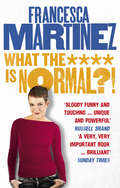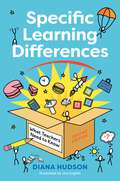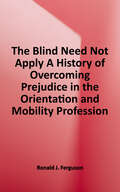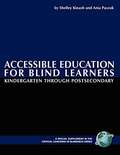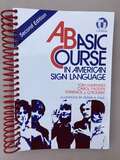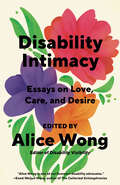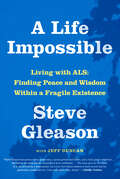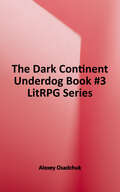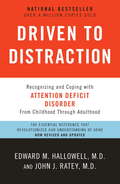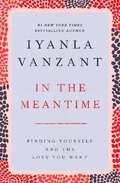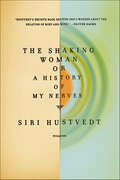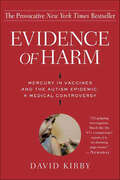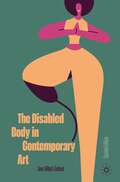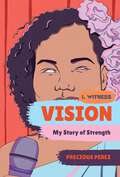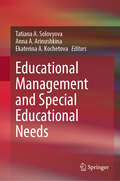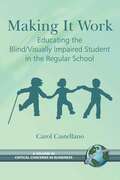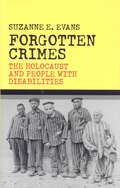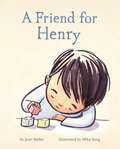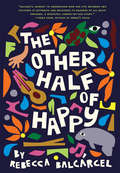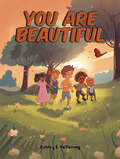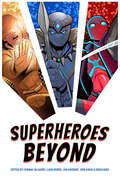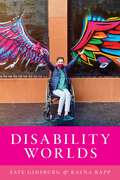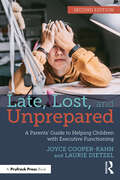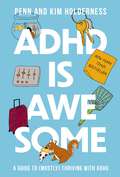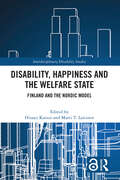- Table View
- List View
What the **** is Normal?!
by Francesca MartinezIf you grow up in a world where wrinkles are practically illegal, going bald is cause for a mental breakdown, and women over size zero are encouraged to shoot themselves (immediately), what the hell do you do if you’re, gasp … DISABLED? Whatever body you’re born into, the pressure to be normal is everywhere. But have you ever met a normal person? What do they look like? Where do they live? What do they eat for breakfast?And what the **** does normal mean anyway?This is the award-winning wobbly comedian Francesca Martinez’s funny, personal, and universal story of how she learned to stick two shaky fingers up to the crazy expectations of a world obsessed with being ‘normal’.
Specific Learning Differences, What Teachers Need to Know (Second Edition): Embracing Neurodiversity in the Classroom
by Diana HudsonThe updated, straight-talking and accessible guide is ideal for teachers, teaching assistants, SENCOs, senior leadership and even home schooling parents who want to know more about supporting students with Learning Differences.Highlighting some of the more commonly encountered Specific Learning Differences (SpLD's), expert Diana Hudson concisely describes the signs of those that are most commonly encountered in the classroom. Covering: dyslexia, dyspraxia, dyscalculia, dysgraphia, autism spectrum condition, ADHD, OCD and featuring brand new chapters on Pathological Demand Avoidance (PDA), Sensory Processing Disorder (SPD) and tics and Tourette Syndrome, this book covers all the information you need, whilst reminding us that all neurodivergent children are individuals and have different qualities.Diana provides an overview of each identity and evaluates how you may need to adapt your levels of support in the classroom - as well as practical suggestions for modifying teaching materials and methods to make learning enjoyable, effective and accessible for all students. There are also dedicated chapters on helping students with SpLD's to improve their organisation and develop effective revision skills and exam techniques.
The Blind Need Not Apply: A History of Overcoming Prejudice in the Orientation and Mobility Profession
by Ronald J. FergusonThis book has been a work in progress. In the spring of 2000 I started this project and began to collect data and conduct interviews. I copied every article I could find in the Journal of Visual Impairment and Blindness and its predecessors Outlook for the Blind and New Outlook for the Blind. I was fortunate to locate Blindness the annual publication of the American Association of Workers for the Blind. One of the greatest finds was the library at the American Foundation for the Blind. The library contains dozens of volumes related to orientation and mobility. Within two years I had amassed a considerable collection of resources. I began working through the materials and along the way prepared some papers for various conferences. A dramatic increase in administrative responsibilities, as well as the tyranny of meeting grant deadlines, diverted me from giving concentrated effort to this book. All that changed as I reduced my workload to devote almost all my efforts over the past nine months to this project.
Accessible Education for Blind Learners: Kindergarten Through Post-secondary (Critical Concerns in Blindness)
by Shelley Kinash Ania Paszuk Author ContributorThe goal of this manual is to enhance the capacity of all members of the educational context, whether student, parent, teacher, administrator, or consultant, to activate the benefits of infused technologies for all learners, including those who are blind or have low vision. To accomplish this purpose this manual provides background and practical information with respect to inquiry-based education, infused technologies, and blindness and visual impairment. You will discover vignettes of real-life blind learners, tips from a blind educator, key components of accessible technology-infused education including information on adaptive technologies for applications that have not yet been designed for all learners, and practical suggestions to make online courses and Web sites accessible. For those who wish to explore further, there are numerous recommendations for further reading, organized to guide the reader to specific content.
Basic Course in American Sign Language
by Tom Humphries Carol Padden Terrence J. O'Rourke Frank A. PaulThere are obvious problems with writing a text for a visual gestural language. This text attempts to alleviate some of these problems by using illustrations and scripts for signed sequences. The text is composed of 22 lessons each of which contains two to four basic explanations of the language structures to be learned. As a resource for the student, a drill or exercises follows. Spaced at intervals throughout the text are several short dialogues which review the language structures discussed in the preceding lessons.
Disability Intimacy: Essays on Love, Care, and Desire
by Edited by Alice WongThe much-anticipated follow up to the groundbreaking anthology Disability Visibility: another revolutionary collection of first-person writing on the joys and challenges of the modern disability experience, and intimacy in all its myriad forms.What is intimacy? More than sex, more than romantic love, the pieces in this stunning and illuminating new anthology offer broader and more inclusive definitions of what it can mean to be intimate with another person. Explorations of caregiving, community, access, and friendship offer us alternative ways of thinking about the connections we form with others—a vital reimagining in an era when forced physical distance is at times a necessary norm. But don't worry: there's still sex to consider—and the numerous ways sexual liberation intersects with disability justice. Plunge between these pages and you'll also find disabled sexual discovery, disabled love stories, and disabled joy. These twenty-five stunning original pieces—plus other modern classics on the subject, all carefully curated by acclaimed activist Alice Wong—include essays, photo essays, poetry, drama, and erotica: a full spectrum of the dreams, fantasies, and deeply personal realities of a wide range of beautiful bodies and minds. Disability Intimacy will free your thinking, invigorate your spirit, and delight your desires.
A Life Impossible: Living with ALS: Finding Peace and Wisdom Within a Fragile Existence
by Steve Gleason Jeff DuncanFrom NFL player Steve Gleason, a powerful, inspiring memoir of love, heartbreak, resilience, family, and remarkable triumph in the face of ALSIn 2011, three years after leaving the NFL, Steve Gleason was diagnosed with ALS, a terminal disease that takes away the ability to move, talk, and breathe. Doctors gave him three years to live. He was thirty-three years old. As Steve says, he is now ten years past his expiration date.His memoir is the chronicle of a remarkable life, one filled with optimism and joy, despite the trauma and pain and despair he has experienced. Writing using eye-tracking technology, Gleason covers his pre-ALS life through the highs and lows of his NFL career with the New Orleans Saints, where he made one of the most memorable plays in Saints history, leading to a victory in the first post-Katrina home game, uplifting the city, making him a hero, and reflected in a nine-foot bronze statue outside the Superdome. Then came his heartbreaking diagnosis. Gleason lost all muscle function, he now uses Stephen Hawking-like technology to communicate, and breathes with the help of a ventilator. This book captures Gleason and his wife Michel&’s unmatched resilience as they reinvent their lives, refuse to succumb to despair, and face his disease realistically and existentially.This unsparing portrait argues that a person's true strength does not reside solely in one&’s body but also in the ability to face unfathomable adversity and still be able to love and treasure life.
The Dark Continent (LitRPG Series)
by Alexey OsadchukEric Bergman used to be treated like an outcast, cripple and freak. Some pitied him, others squirmed in his presence, while others still mocked him to his face. He himself even thought he was born cursed by the gods. But bit by bit, all that changed. That which was once considered a flaw or defect transformed into an advantage. And Eric slowly learned to use it to his benefit. Eric and his friends escape Master Chi’s Hive, journey over the orcish steppe and through the Stone Forest, which tempers them and makes them a lot stronger. During his travels, Eric discovers that his elder brother never went to the Wastes, and that his parents were lied to about what happened to him. Eric promises himself to uncover the truth about his long lost brother. Beyond that, the more he encounters the grim heritage of the Order of Monster Hunters, the more he realizes just how perilous a game the Foxman has drawn him into. Moving through the borderlands toward his home city no more than a few days ahead of the orcish Horde, Eric still has yet to guess that his adventure is just getting started.
Driven to Distraction (Revised): Recognizing and Coping with Attention Deficit Disorder
by Edward M. Hallowell John J. RateyGroundbreaking and comprehensive, Driven to Distraction has been a lifeline to the approximately eighteen million Americans who are thought to have ADHD. Now the bestselling book is revised and updated with current medical information for a new generation searching for answers. Through vivid stories and case histories of patients—both adults and children—Hallowell and Ratey explore the varied forms ADHD takes, from hyperactivity to daydreaming. They dispel common myths, offer helpful coping tools, and give a thorough accounting of all treatment options as well as tips for dealing with a diagnosed child, partner, or family member. But most importantly, they focus on the positives that can come with this &“disorder&”—including high energy, intuitiveness, creativity, and enthusiasm.
In the Meantime: Finding Yourself and the Love You Want (Inspirational Ser.)
by Iyanla Vanzant&“The most powerful spiritual healer, fixer, teacher on the planet.&” —Oprah Winfrey The #1 national bestseller from the host of the show Iyanla: Fix My Life on the Oprah Winfrey Network (OWN) that answers the question: What&’s love got to do with it in the meantime?You know where you want to be, but you have no clue how to get there. You know exactly what you want in life, but what you want is nowhere in sight. Perhaps your vision is unclear, your purpose still undefined. On top of it all, your relationships, particularly your romantic relationships, are failing. If these scenarios feel familiar way down in the deepest part of your gut—then you, my dear, are smack dab in the middle of the meantime. Every living being wants to experience the light of love. The problem is that our windows are dirty! The windows of our hearts and minds are streaked with past pains and hurts, past memories and disappointments. In this book, Iyanla Vanzant teaches us how to do our mental housekeeping so that we can clean the windows, floors, walls, closets, and corners of our minds. If we do a good job, our spirits will shine bringing in the light of true love and happiness.
The Shaking Woman, or A History of My Nerves
by Siri HustvedtIn this unique neurological memoir Siri Hustvedt attempts to solve her own mysterious conditionWhile speaking at a memorial event for her father in 2006, Siri Hustvedt suffered a violent seizure from the neck down. Despite her flapping arms and shaking legs, she continued to speak clearly and was able to finish her speech. It was as if she had suddenly become two people: a calm orator and a shuddering wreck. Then the seizures happened again and again. The Shaking Woman or A History of My Nerves tracks Hustvedt's search for a diagnosis, one that takes her inside the thought processes of several scientific disciplines, each one of which offers a distinct perspective on her paroxysms but no ready solution. In the process, she finds herself entangled in fundamental questions: What is the relationship between brain and mind? How do we remember? What is the self? During her investigations, Hustvedt joins a discussion group in which neurologists, psychiatrists, psychoanalysts, and brain scientists trade ideas to develop a new field: neuropsychoanalysis. She volunteers as a writing teacher for psychiatric in-patients at the Payne Whitney clinic in New York City and unearths precedents in medical history that illuminate the origins of and shifts in our theories about the mind-body problem. In The Shaking Woman, Hustvedt synthesizes her experience and research into a compelling mystery: Who is the shaking woman? In the end, the story she tells becomes, in the words of George Makari, author of Revolution in Mind, "a brilliant illumination for us all."
Evidence of Harm: Mercury in Vaccines and the Autism Epidemic: A Medical Controversy
by David KirbyIn the 1990s reported autism cases among American children began spiking, from about 1 in 10,000 in 1987 to a shocking 1 in 166 today. This trend coincided with the addition of several new shots to the nation's already crowded vaccination schedule, grouped together and given soon after birth or in the early months of infancy. Most of these shots contained a little-known preservative called thimerosal, which includes a quantity of the toxin mercury.Evidence of Harm explores the heated controversy over what many parents, physicians, public officials, and educators have called an "epidemic" of afflicted children. Following several families, David Kirby traces their struggle to understand how and why their once-healthy kids rapidly descended into silence or disturbed behavior, often accompanied by severe physical illness. Alarmed by the levels of mercury in the vaccine schedule, these families sought answers from their doctors, from science, from pharmaceutical companies that manufacture vaccines, and finally from the Center for Disease Control and the Food and Drug Administration-to no avail. But as they dug deeper, the families also found powerful allies in Congress and in the small community of physicians and researchers who believe that the rise of autism and other disorders is linked to toxic levels of mercury that accumulate in the systems of some children.An important and troubling book, Evidence of Harm reveals both the public and unsung obstacles faced by desperate families who have been opposed by the combined power of the federal government, health agencies, and pharmaceutical giants. From closed meetings of the FDA, CDC, and drug companies, to the mysterious rider inserted into the 2002 Homeland Security Bill that would bar thimerosal litigation, to open hearings held by Congress, this book shows a medical establishment determined to deny "evidence of harm" that might be connected with thimerosal and mercury in vaccines. In the end, as research is beginning to demonstrate, the questions raised by these families have significant implications for all children, and for those entrusted to oversee our national health.
The Disabled Body in Contemporary Art
by Ann Millett-GallantThe second edition offers an essential update to the foundational first edition, The Disabled Body in Contemporary Art. Featuring updated chapters and case studies, this second edition will not only expand on the first edition but will bring a new focus to contemporary disabled artists and their embodied, multimedia work.
Vision: My Story Of Strength (I, Witness #0)
by Precious PerezA young activist opens a window into her journey to become a professional musician and leader for the disabled community. Ever since Precious Perez was a child, she has loved to sing. Born and raised outside Boston, her family joked that she’d eventually study at Berklee College of Music. But when a high school music teacher advocated for Precious’s talent, her dream became a reality. Precious was born two-and-a-half months premature and weighed just one pound. Her eyes did not develop fully, and she is blind. Growing up, most people focused on what Precious could not do because of her disability. With her teacher’s support, Precious realized all the things she could do with her disability—starting with attending Berklee. With a voice that is both accessible and engaging, Vision brings forward an empowering first-person account of a woman finding strength and purpose in her disability. The I, Witness series delivers compelling narrative nonfiction by young people, for young people.
Educational Management and Special Educational Needs
by Tatiana A. Solovyova Anna A. Arinushkina Ekaterina A. KochetovaThis book systematizes the latest findings on the clinical, psychological, and pedagogical features of today’s children with special educational needs (SEN) and expands the scientific understanding that characterizes such children. The book develops a system of education and assistance for children with SEN, including children with locomotor disabilities, intellectual disabilities, autism spectrum disorders, and hearing and visual impairments. The book is intended for heads of educational authorities, parents, specialists working with children with special educational needs, psychologists, teachers, methodologists, specialists in the field of inclusive education, and students and teachers in special education of pedagogical and psychological departments of higher education institutions.
Making It Work: Educating The Blind/Visually Impaired Student in the Regular School (Critical Concerns in Blindness Series)
by Carol CastellanoMaking It Work is destined to be the definitive guide for years to come on how to make the regular school education a successful experience for blind/visually impaired children. With chapters flowing logically and full of detailed, useful information, it will be an essential handbook for school staff, specialized service providers, and parents of blind/visually impaired children. This is an exquisite, enlightened guide for the education of blind/visually impaired children in the new millennium.
Forgotten Crimes: The Holocaust And People With Disabilities
by Suzanne E. EvansBetween 1939 and 1945 the Nazi regime systematically murdered hundreds of thousands of children and adults with disabilities as part of its "euthanasia" programs. These programs were designed to eliminate all persons with disabilities who, according to Nazi ideology, threatened the health and purity of the German race. Forgotten Crimes explores the development and workings of this nightmarish process, a relatively neglected aspect of the Holocaust. Suzanne Evans's account draws on the rich historical record as well as scores of exclusive interviews with disabled Holocaust survivors. It begins with a description of the Nazis' Children's Killing Program, in which tens of thousands of children with mental and physical disabilities were murdered by their physicians, usually by starvation or lethal injection. The book goes on to recount the T4 euthanasia program, in which adults with disabilities were disposed of in six official centers, and the development of the Sterilization Law that allowed the forced sterilization of at least a half-million young adults with disabilities. Ms. Evans provides portraits of the perpetrators and accomplices of the killing programs, and investigates the curious role of Switzerland's rarely discussed exclusionary immigration and racially eugenic policies. Finally, Forgotten Crimes notes the inescapable implications of these Nazi medical practices for our present-day controversies over eugenics, euthanasia, genetic engineering, medical experimentation, and rationed health care.
A Friend for Henry
by Jenn BaileyIn Classroom Six, second left down the hall, Henry has been on the lookout for a friend. A friend who shares. A friend who listens. Maybe even a friend who likes things to stay the same and all in order, as Henry does. But on a day full of too close and too loud, when nothing seems to go right, will Henry ever find a friend—or will a friend find him? With insight and warmth, this heartfelt story from the perspective of a boy on the autism spectrum celebrates the everyday magic of friendship.
The Other Half of Happy
by Rebecca BalcárcelQuijana is a girl in pieces. One-half Guatemalan, one-half American: When Quijana's Guatemalan cousins move to town, her dad seems ashamed that she doesn't know more about her family's heritage. One-half crush, one-half buddy: When Quijana meets Zuri and Jayden, she knows she's found true friends. But she can't help the growing feelings she has for Jayden. One-half kid, one-half grown-up: Quijana spends her nights Skyping with her ailing grandma and trying to figure out what's going on with her increasingly hard-to-reach brother. In the course of this immersive and beautifully written novel, Quijana must figure out which parts of herself are most important, and which pieces come together to make her whole. This lyrical debut from Rebecca Balcárcel is a heartfelt poetic portrayal of a girl growing up, fitting in, and learning what it means to belong.
You Are Beautiful
by Ashley E. KetteringYou Are Beautiful is a contemporary children&’s book that celebrates children&’s differences. This is a book that any child can pick up to read and feeling good about themselves and their friends.You Are Beautiful is a representation of many children, including those with special needs. This book highlights differences, teaches kindness, understanding and reminds us all that we are beautiful just the way we are.
Superheroes Beyond
by Cormac McGarry, Liam Burke, Ian Gordon, and Angela NdalianisContributions by Mitchell Adams, Frederick Luis Aldama, Jason Bainbridge, Djoymi Baker, Liam Burke, Octavia Cade, Hernan David Espinosa-Medina, Dan Golding, Ian Gordon, Sheena C. Howard, Aaron Humphrey, Naja Later, Cormac McGarry, Angela Ndalianis, Julian Novitz, Alexandra Ostrowski Schilling, Maria Lorena M. Santos, Jack Teiwes, and Enrique Uribe-Jongbloed In recent years, superheroes on the page and screen have garnered increasing research and wider interest. Nonetheless, many works fall back on familiar examples before arriving at predictable conclusions. Superheroes Beyond moves superhero research beyond expected models. In this innovative collection, contributors unmask international crimefighters, track superheroes outside of the comic book page, and explore heroes whose secret identities are not cisgender men. Superheroes Beyond responds to the growing interest in understanding the unique appeal of superheroes by reveling in the diversity of this heroic type. Superheroes Beyond explores the complexity and cultural reach of the superhero in three sections. The first, “Beyond Men of Steel,” examines how the archetype has moved beyond simply recapitulating the “man of steel” figure to include broader representations of race, gender, sexuality, and ableness. The second section, “Beyond Comic Books,” discusses how the superhero has become a transmedia phenomenon, moving from comic books to toys to cinema screens and beyond. The final section, “Beyond the United States,” highlights the vibrant but often overlooked history of global superhero figures. Together, the essays in this collection form important starting points for taking stock of the superhero’s far-reaching appeal, contributing the critical conversations required to bring scholarship into the present moment and beyond.
Disability Worlds
by Faye Ginsburg Rayna RappIn Disability Worlds, Faye Ginsburg and Rayna Rapp chronicle and theorize two decades of immersion in New York City’s wide-ranging disability worlds as parents, activists, anthropologists, and disability studies scholars. They situate their disabled children’s lives among the experiences of advocates, families, experts, activists, and artists in larger struggles for recognition and rights. Disability consciousness, they show, emerges in everyday politics, practices, and frictions. Chapters consider dilemmas of genetic testing and neuroscientific research, reimagining kinship and community, the challenges of “special education,” and the perils of transitioning from high school. They also highlight the vitality of neurodiversity activism, disability arts, politics, and public culture. Disability Worlds reflects the authors’ anthropological commitments to recognizing the significance of this fundamental form of human difference. Ginsburg and Rapp’s conversations with diverse New Yorkers reveal the bureaucratic constraints and paradoxes established in response to the disability rights movement, as well as the remarkable creativity of disabled people and their allies who are opening pathways into both disability justice and disability futures.
Late, Lost, and Unprepared: A Parents’ Guide to Helping Children with Executive Functioning
by Joyce Cooper-Kahn Laurie DietzelDoes your child have difficulty meeting deadlines, staying organized, or keeping track of important information? Do they tend to forget details? Are they prone to emotional meltdowns? This book will become your go-to, all-inclusive guide to helping children manage issues with these executive functions, a set of related yet distinct mental skills that allow us to stay on target as we work toward our goals.Packed with encouragement, strategies, overviews, case studies, tips, and more, this newly revised edition offers science-based information explained in accessible, everyday language. You will find down to earth examples and a flexible framework that allows you to think on your feet and adapt the strategies to any child or situation.In addition to providing approaches for helping your child to manage demands in the short run, this book offers strategies for building independent skills for long-term self-management. Covering what you need to know, as well as what you can do, Late, Lost, and Unprepared gives parents the support they need to help their child become productive and independent – today and in the future.
ADHD is Awesome: A Guide to (Mostly) Thriving with ADHD
by Penn Holderness Kim HoldernessAN INSTANT NEW YORK TIMES BESTSELLERThe engaging, uplifting antidote to traditional ADHD books (which, let's be honest, if you have ADHD you'd never read anyway).You live in a world that wasn't designed for you. A world where you're expected to sit still, stay quiet, and focus. Because of the way your brain is wired, you can feel like you&’re failing at life. But you are not failing. You are awesome.Award-winning content creators Kim and Penn Holderness are on a mission to reboot how we think about the unfortunately named "attention-deficit/hyperactivity disorder." As always, they are doing it by looking in the mirror, because they don't just study ADHD; they live it.Penn was in college when he was diagnosed with ADHD, although the signs of having a brain that worked just a little bit differently had been there since he was a kid. Rather than view the diagnosis as a curse or give in to feelings of inadequacy or failure, he took a different approach, one that he wants to share with fellow ADHDers and the people who care about them.Drawing on their often-hilarious insights and the expertise of doctors, researchers, and specialists; Kim and Penn provide fun, easy-to-digest advice and explanations, including:What it's actually like to live with an ADHD brain.How to find humor in the pitfalls, sob stories, and unbelievable triumphs (like the time they won The Amazing Race!) that come with ADHD.How to tackle the challenges ADHD presents with a positive outlook.Targeted tools and techniques to play to your unique strengths.Fun extras like ADHD Bingo, an ode to cargo pants, and what the world would look like if ADHDers were in charge.Take it from Penn: Having ADHD can be scary, but it comes with incredible upsides, including creativity, hyperfocus, and energy. You might even say it's kind of awesome. Whether you have ADHD or want to support someone else in their journey, this is the guide you need to make the life you want.
Disability, Happiness and the Welfare State: Finland and the Nordic Model (Interdisciplinary Disability Studies)
by Hisayo Katsui Matti T. LaitinenThis book looks at disability as an evolving social phenomenon. Disability is created through the interaction between persons with impairments and their environment.Exploring these experiences of persons with disabilities and discussing universality and particularity in our understanding of assumed development and normalcy, it takes Finland, which has been chosen repeatedly as the happiest country in the world as its case- study. Using disability as a critical lens helps to demystify Finland that has the positive reputation of a Welfare State. By identifying different kinds of discrimination against persons with disabilities as well as successful examples of disability inclusion, it shows that when looking Finland from the perspective of persons with disabilities, inequality and poverty have been collective experiences of too many of them.It will be of interest to all scholars and students of disability studies, sociology, social policy, social work, political science, health and well-being studies and Nordic studies more broadly.The Open Access version of this book, available at http://www.taylorfrancis.com, has been made available under a Creative Commons [Attribution-Non Commercial-No Derivatives (CC-BY-NC-ND)] 4.0 license.
